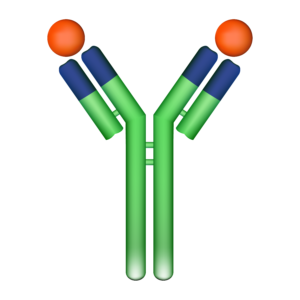
Several studies have shown that there is clear clinical relevance based on the specific antibody type. Different antibodies have very different risk profiles. For example, with RNA Polymerase III antibodies, there is a significantly increased risk of kidney involvement early in the disease process. With centromere antibodies, pulmonary artery hypertension is a significant risk, but usually later in the disease process.
As indicated in Table 2 below, the three most common antibodies found in patients with systemic scleroderma are Scl-70, centromere, and RNA Polymerase III. While relatively complete scleroderma antibody panels are available from some commercial reference labs (e.g., RDL Reference Laboratory and ARUP Laboratories), individual antibody testing can be done at most other labs. Since most patients with systemic scleroderma will have one of these three common antibodies, many clinicians will start with testing for these antibodies before doing additional testing for rarer antibodies.
One cautionary note about Scl-70 testing: there is some data that suggests a significant false positive error rate when testing for Scl-70 antibodies using newer solid-phase Multiplex testing methods (Meier et al. 2011), primarily when results are in the low positive range. Because of this potential issue, RDL Reference Lab confirms all positive Scl-70 results initially done by the ELISA method using a more accurate method called immunodiffusion. Another reference lab, ARUP Laboratories, notes that if more than one scleroderma-specific antibody tests positive in their full scleroderma antibody panel, the Scl-70 is probably a false positive and should be ignored. Research shows that fewer than 2% of systemic scleroderma patients have more than one positive scleroderma specific antibody when testing problems are eliminated.
Table 2: lists all generally accepted scleroderma-related antibodies along with some general information on risks and other clinical associations.
Antibody |
Estimated Prevalence |
Classification* |
Testing Available |
Clinical Associations |
Notes |
|---|---|---|---|---|---|
| Anti-centromere (ACA) | 20 to 30% | Limited | Yes | CREST, PAH | Skin changes often delayed for many years |
| Anti-Scl-70 (Anti-topoisomerase) |
15 to 20% | Diffuse | Yes | ILD | Rapid skin thickening, early internal organ involvement |
| Anti-RNA polymerase III | ~ 20% | Diffuse | Yes | PAH, cardiac, kidney | Increased mortality |
| Anti-Th/To | 2 to 5% | Limited | Yes | PAH, ILD | Worse prognosis than ACA |
| Anti-PM-Scl | 2 to 3% | Overlap | Yes | Myositis (muscle) | Good prognosis, often responsive to steroids |
| Anti-U3-RNP (Fibrillarin) |
~ 4% | Diffuse/ Limited |
Yes | Myositis, PAH, kidney, cardiac | Seen in younger patients with greater internal organ involvement |
| Anti-U1-RNP | ~ 8% | Overlap | Yes | Myositis, ILD, joint | MCTD. More benign, responsive to steroids |
| Anti-Ku | Rare | Overlap | Yes | Myositis | Limited cutaneous involvement |
| Anti-U11/U12-RNP | ~ 3% | Diffuse/ Limited |
No | ILD, joint | Severe lung fibrosis |
| Anti-RuvBL1/2 | ~ 2% | Overlap | No | Myositis | Diffuse cutaneous involvement |
| ANA/antibody negative† | ~ 6% | Diffuse more common | Yes | GI | Reduced vascular and lung involvement |
* classification as diffuse or limited refers to the skin fibrosis pattern seen with the antibody. Overlap variants include symptoms seen in other disease.
† patients are ANA negative when tested by indirect immunofluorescence and have no detectable scleroderma-specific antibodies (Salazar et al. 2015)
